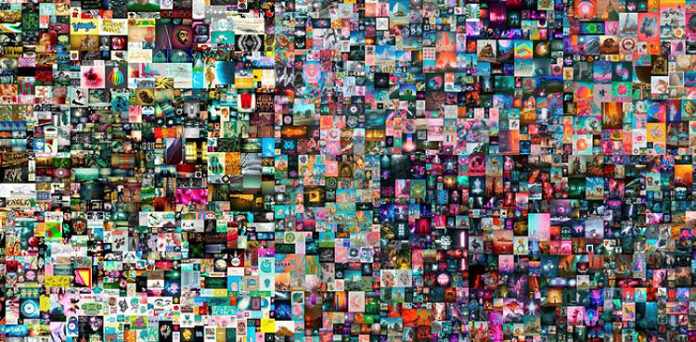MIAMI: In October 2020, Miami-based art collector Pablo Rodriguez-Fraile spent almost $67,000 on a 10-second video artwork that he could have watched for free online. Last week, he sold it for $6.6 million.
The video by digital artist Beeple, whose real name is Mike Winkelmann, was authenticated by blockchain, which serves as a digital signature to certify who owns it and that it is the original work.
It’s a new type of digital asset – known as a non-fungible token (NFT) – that has exploded in popularity during the pandemic as enthusiasts and investors scramble to spend enormous sums of money on items that only exist online.
Blockchain technology allows the items to be publicly authenticated as one-of-a-kind, unlike traditional online objects which can be endlessly reproduced.
“You can go in the Louvre and take a picture of the Mona Lisa and you can have it there, but it doesn’t have any value because it doesn’t have the provenance or the history of the work,” said Rodriguez-Fraile, who said he first bought Beeple’s piece because of his knowledge of the U.S.-based artist’s work.
“Non-fungible” refers to items that cannot be exchanged on a like-for-like basis, as each one is unique – in contrast to “fungible” assets like dollars, stocks or bars of gold.
Examples of NFTs range from digital artworks and sports cards to pieces of land in virtual environments or exclusive use of a cryptocurrency wallet name, akin to the scramble for domain names in the early days of the internet.
The computer-generated video sold by Rodriguez-Fraile shows what appears to be a giant Donald Trump collapsed on the ground, his body covered in slogans, in an otherwise idyllic setting.
OpenSea, a marketplace for NFTs, said it has seen monthly sales volume grow to $86.3 million so far in February, as of Friday, from $8 million in January, citing blockchain data. Monthly sales were at $1.5 million a year ago.
“If you spend 10 hours a day on the computer or eight hours a day in the digital realm, then art in the digital realm makes tonnes of sense – because it is the world,” said OpenSea’s co-founder Alex Atallah.
Investors caution, however, that while big money is flowing into NFTs, the market could represent a price bubble.
Like many new niche investment areas, there is the risk of major losses if the hype dies down, while there could be prime opportunities for fraudsters in a market where many participants operate under pseudonyms.
CHRISTIE’S ‘EMBRACES TERRIFYING’
Nonetheless, auction house Christie’s has just launched its first-ever sale of digital art – a collage of 5,000 pictures, also by Beeple – which exists solely as an NFT.
Bids for the work have hit $3 million, with the sale due to close on March 11.
“We are in a very unknown territory. In the first 10 minutes of bidding we had more than a hundred bids from 21 bidders and we were at a million dollars,” said Noah Davis, specialist in post-war and contemporary art at Christie’s.
His division has never seen an online-only sale top $1 million before, he added.
In a decision that could help push cryptocurrencies further into the mainstream, the auction house that was founded in 1766 will accept payment in the digital coin Ether as well as traditional money.
“I think that this moment was inevitable and whenever institutions of any kind try to resist inevitability, it does not work out very well,” Davis said of accepting crypto payment. “And so the best thing you can do is embrace the terrifying.”




